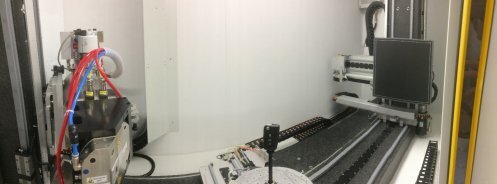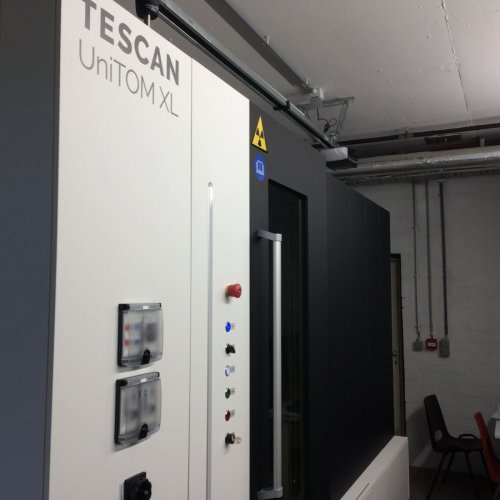Our FleXCT is an extreme flexible and versatile X-ray scanner (funded by the Hercules Foundation of FWO Vlaanderen, built by XRE). Its unique character is based on several pillars:
- It covers a wide energy range (20-230 keV), which allows to analyse a wide variety of samples: from low absorbing materials (e.g. biological samples, polymers) to dense materials (e.g. stone, rock, metals).
- Sample and detector can travel along a 2 meter axis, which allows a large magnification range. Micrometer up to meter sized samples can thus image objects with variable resolution.
- Uniquely, the instrument has 10 motorized axes to move sample, detector and X-ray tube with respect to each other, allowing not only conventional radiography or CT, but a wide range of other scanning geometries (e.g. laminography, dynamic zooming, helical CT, 4DCT)
- The FleXCT is a high throughput scanner. A first (exploratory) CT scan can be taken in only few minutes. On the other hand, dozens of samples can be analysed in batch as well.

Main specifications of the FleXCT micro-CT scanner:
- Energy: 20-230 keV
- Max. output power: 300 W
- Highest resolution achievable: 2-3 micron
- Sample size: few micrometer to meter size samples
- (max. 60 cm diameter and 1.15 m height)
- Max sample weight: 45 kg ( up to 80 kg when using the rotation stage only)
- On top of the rotation stage, a connector can be made available with IO ports, RJ45, AC/DC power with full rotation flexibility which allows installation of specific sample environments.

The FleXray system will allow us to acquire data to fully explore a far wider range of applications and opportunities for PC-CT that are currently not possible:
● Exploration of advanced CT acquisition models to enable reconstruction from
(1) fewer projection images and
(2) projection images acquired during continuous sample rotation. This will result in faster PC-CT imaging (currently up to 8 times longer than regular CT). PC-CT reveals complementary information to traditional attenuation based X-ray imaging (i.e. higher contrast in soft tissue).
● Dark field tomography is only in its infancy but recently showed huge potential in material characterisation. The FleXray system will open new research lines on dark field tomography, in particular in accurate and precise estimation of localized scattering profiles.
● Development of Krylov solvers with much faster convergence for simultaneous multimodal reconstruction of full 3D images of attenuation, phase and dark field signals.